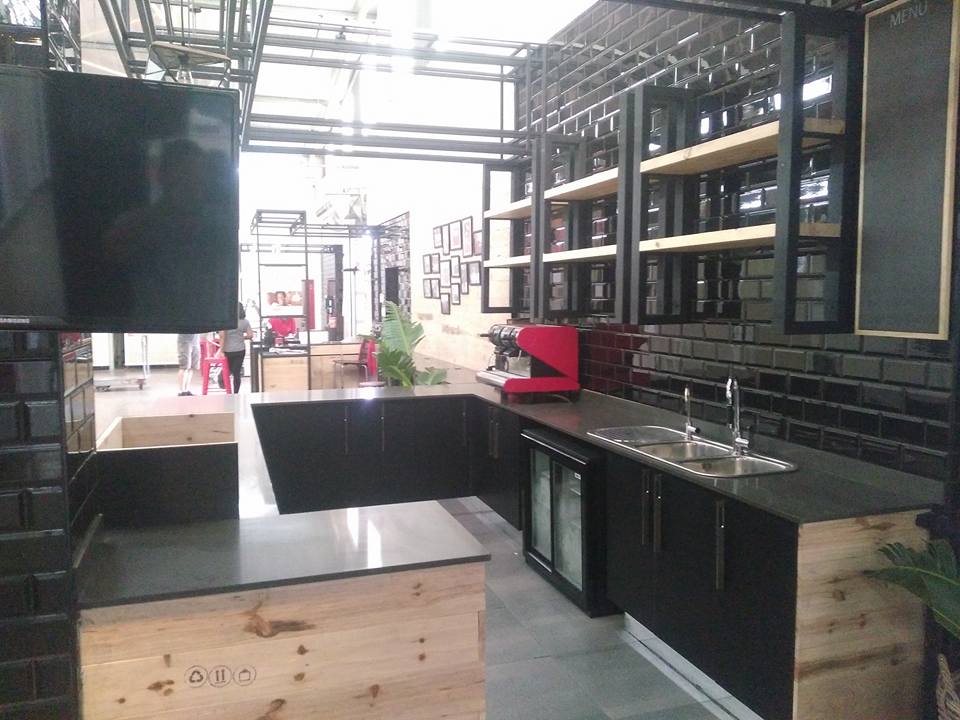In the realm of home improvement, deciding on the perfect countertop can leave you at a crossroads. Granite and marble, with their luxurious aesthetic and innate durability, are often the front runners in this deliberation. However, the cost disparity might have you wondering whether the value justifies the expense.
In the quest for a countertop that strikes a balance between elegance, longevity, and cost-effectiveness, understanding the underlying factors driving these costs can be crucial. Leveraging years of experience in the realm of home renovations, we'll delve into the intricacies of installation, maintenance, and long-term investment for both granite and marble countertops.
Through this exploration, we aim to provide clarity on whether shelling out extra for marble is indeed a wise decision for your home. Rest assured, by the end of this article, you'll be equipped with the knowledge to make an informed choice that best suits your needs and budget.
Let's embark on this journey to unravel the true value behind these luxurious countertop options.
Appearance
When considering the appearance of granite and marble countertops, it is evident that both materials offer a diverse array of colors, patterns, and finishes, each contributing to the overall aesthetic impact of the countertop.
Granite countertops present a wide range of colors and variations, from subtle specks to unique streaks. Unusual colors like red or blue may become less popular over time due to changing trends.
On the other hand, marble is easily recognizable by its heavenly veining and classic, timeless looks, featuring unparalleled patterns and variations, ranging from fine lines to thicker movement.
Both granite and marble countertops come in polished, honed, leather, and brushed finishes, allowing for a choice of shiny, matte, or textured appearances.
Granite countertops exhibit a granular appearance with varied specks of color, while marble countertops have a larger pattern with veins running through them, concentrating the color in the veins.
The beauty of marble and granite is subjective and can be determined by personal preference, as each slab is unique in its appearance and color variations.
Durability
The comparison of granite and marble countertops in terms of durability reveals a significant advantage for granite over marble, aligning with its reputation as one of the most resilient natural stone options available. When considering the durability of these natural stone materials, several key factors come into play:
- Granite is highly resistant to cracks, chips, and scratches, making it more durable than marble in high-traffic areas of the home.
- Spills on granite can be easily wiped up, and the surface can withstand the heat of hot pots and pans without sustaining damage, adding to its durability and practicality in the kitchen.
- While marble is stronger than commonly believed, it is more susceptible to scratching and staining compared to granite.
- Additionally, marble requires more care and maintenance to preserve its appearance and durability, such as sealing after installation and being cautious with acidic liquids.
Maintenance
Regular maintenance is essential for preserving the longevity and appearance of both granite and marble countertops. Proper care and regular sealing are crucial to protect these natural stone surfaces from potential damage. Here are the key maintenance considerations for granite and marble countertops:
| Maintenance Aspect | Granite | Marble |
|---|---|---|
| Sealing Frequency | Seal every two years | Seal every six months to one year |
| Cleaning | Mild soap and water | pH neutral or natural stone cleansers |
| Stain Prevention | Quickly wipe up spills, especially oil-based | Quickly wipe up spills to avoid staining |
| Stain Removal | Minor damage can be fixed with color-matching epoxy | Specific detergents may be required for stain removal |
| Avoiding Damage | Avoid placing hot pots and pans directly on the surface | Avoid acidic foods and liquids that can etch the surface |
Price Comparison
When comparing the costs of granite and marble countertops, it's crucial to consider the cost per square foot and the associated installation expenses.
Granite generally comes at a lower price point, with costs ranging from $40 to $100 per square foot, while marble tends to be pricier, ranging from $50 to $150 per square foot.
Additionally, installation expenses can vary based on factors such as stone type, size, and complexity of the installation.
Cost per Square Foot
Comparing the cost per square foot of granite and marble countertops reveals significant differences in pricing, reflecting the varying expenses associated with each stone type.
- Granite typically costs around $40 to $100 per square foot, making it generally more affordable than marble.
- Marble, on the other hand, ranges from $50 to $150 per square foot, making it the more expensive option.
- Granite is known for its lower maintenance and durability, coming in a wide variety of colors to suit different design preferences.
When considering the cost of countertops, the price per square foot plays a crucial role in decision-making. While marble may be more expensive, some homeowners may find the investment worthwhile due to its luxurious appearance. However, for those seeking a more budget-friendly yet durable option, granite remains a popular choice.
Installation Expenses
The cost per square foot comparison between granite and marble countertops not only sheds light on the pricing disparities but also serves as a precursor to the examination of installation expenses, particularly the price disparity between the two materials.
Granite installation expenses are generally lower compared to marble due to the lower cost per square foot. The price range for installing granite countertops is usually between $40 to $100 per square foot, while marble installation can range from $50 to $150 per square foot. Factors influencing installation costs include the type of stone, size of the countertop, additional treatments, and labor.
Higher quality or rarer stone types, larger slabs, and complex installations can increase the overall installation expenses for both granite and marble countertops. Comparing installation expenses can help determine the most cost-effective option for your specific needs and budget.
Installation Costs
Installation costs for granite and marble countertops are influenced by various factors, including the type of stone, dimensions, and the intricacy of the required labor. When considering installation costs for granite and marble countertops, the following factors should be taken into account:
- Stone Type: Both granite and marble are natural, solid surface materials. However, the installation costs can differ depending on the specific characteristics of each stone.
- Slab Size: Larger slabs or the need for additional treatments, such as sealing, can impact the overall installation costs for both granite and marble countertops.
- Labor Complexity: The intricacy of the installation, such as intricate designs or the requirement for a plywood substrate in the case of thinner marble slabs, can affect the installation expenses.
It's important to note that both marble and granite countertops are fabricated and installed in a similar manner, involving the creation of templates, cutting and finishing the slabs, and the final installation.
When comparing overall expenses, it's crucial to consider both the material and installation costs for granite and marble countertops, especially for kitchen applications where durability, maintenance, and aesthetics are essential.
Long-Term Investment
With its exceptional durability and resistance to scratches, granite countertops stand out as a compelling long-term investment for homeowners seeking enduring quality in their kitchen surfaces. Compared to marble, granite requires less frequent sealing and lower maintenance, resulting in potential long-term cost savings. This makes granite a wise investment, as it not only offers durability but also contributes to the long-term property value of a home. Its resistance to stains and scratches, along with lower maintenance needs, can result in a longer lifespan, making it a cost-effective long-term choice for countertops.
Additionally, the wide range of colors and patterns available in granite can appeal to a broader range of potential homebuyers, potentially increasing its long-term value in the housing market. While marble is an elegant choice, its higher maintenance and susceptibility to scratches and chips may make it a less cost-effective long-term investment compared to granite. Therefore, homeowners looking for enduring quality and long-term cost savings in their kitchen surfaces may find granite countertops to be a more attractive and practical investment option.
Return on Investment
While granite countertops are recognized for their enduring quality and long-term cost savings, the return on investment (ROI) for this material generally surpasses that of marble due to its lower cost and greater durability.
- Lower initial cost per square foot compared to marble.
- Lower maintenance requirements, reducing long-term costs and contributing to a higher ROI.
- Greater durability, with fewer chips and cracks, especially suitable for hardworking kitchens.
Granite's lower initial cost per square foot makes it a more attractive option for those seeking a cost-effective investment. Additionally, its lower maintenance needs, including less frequent resealing, contribute to a higher ROI compared to marble. The durability of granite also plays a significant role in its better return on investment, as it is more resistant to chips and cracks, making it particularly suitable for high-traffic areas like kitchens.
These factors combined make granite countertops a practical and financially sound choice, providing homeowners with both long-term value and enduring quality.
Frequently Asked Questions
Is Marble or Granite More Expensive for Countertops?
When comparing marble and granite for countertops, granite is generally less expensive. However, marble offers a luxurious appearance and is more prone to staining and scratching. Both require professional installation and regular maintenance for long-term durability and aesthetic appeal.
Why Choose Marble Over Granite?
Marble offers advantages in aesthetics, design flexibility, and color options over granite. It boasts timeless elegance, durability, and heat resistance. While requiring regular maintenance, its longevity and stain resistance justify its higher cost.
Is Marble Worth More Than Granite?
While marble exudes classic elegance and unique veining, granite surpasses it in durability, stain and heat resistance. Granite's lower maintenance, wider color options, and long-term value make it a more practical and cost-effective choice for countertops.
Why Is Granite More Expensive?
Granite is more expensive due to its exceptional durability, wide range of colors and patterns, and heat resistance. In contrast, marble requires more maintenance, is susceptible to staining, and lacks the same level of durability.

















